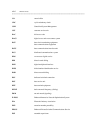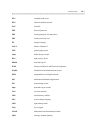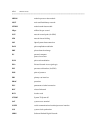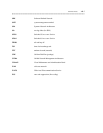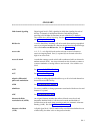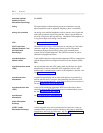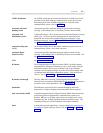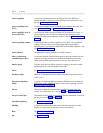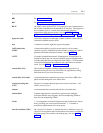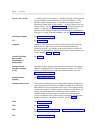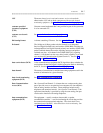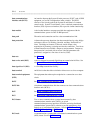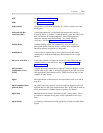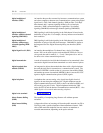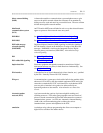GL-4 GLOSSARY
_ ___________________________________________________________________________________________________________________________
_ ___________________________________________________________________________________________________________________________
_ ___________________________________________________________________________________________________________________________
bearer capability A term used with Integrated Services Digital Networks (ISDNs) to
identify the kinds of service that are requested or are available for a call.
See also bearer-capability class.
bearer-capability class
(BCC)
A term used to identify the kind of trunk service required for a call. See
also bearer capability and bearer-capability routing.
bearer capability class of
service (BCCOS)
A term used to identify the type of trunk service required for a caller. A
bearer capability class of service is assigned to the calling party and
identifies the trunk bearer capability required. See also bearer-capability
routing.
bearer-capability routing A method provided by bearer-capability classes (BCCs) for specialized
routing of various trunk services using Integrated Services Digital
Network primary rate interface (ISDN-PRI) and non-ISDN endpoints. See
also bearer-capability class.
bearer channel An information carrying channel on an ISDN interface.
binary synchronous
communications (BSC)
A character-oriented communications protocol that uses a defined set and
sequence of control characters for synchronous transmission of binary-
coded decimal (BCD) data between two devices. Also called bisync.
bipolar signal A digital signal that uses either a positive or negative excursion, usually
alternating, for one state and ground for the other.
bisync See binary synchronous communications.
bit (binary digit) One unit of information in binary notation, having two possible states or
values: 0 or 1.
bit-oriented signaling
(BOS)
A version of a digital multiplexed interface (DMI) that uses an enhanced
BOS format on the signaling channel for call-control signaling. See also
message-oriented signaling.
bit rate The speed at which bits are transmitted, usually expressed in bits per
second. Also called data rate. See also baud and bits per second.
bits per second (bps) The number of binary units of information that are transmitted or received
per second. See also baud and bit rate.
bit-robbed signaling See robbed-bit signaling.
blocking A condition in which end-to-end connections cannot be made on calls
because of a full load on all possible services and facilities.
BOS See bit-oriented signaling.
bps See bits per second.



